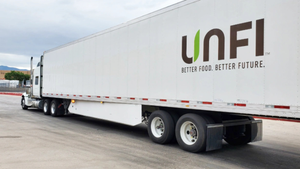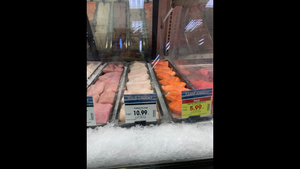Beef Industry Addresses Pricing, Supply to Meet Consumer Demand
Rising costs and supply-chain pressures are a fact of life throughout the food industry. As a longtime beef producer, I know that the beef industry is no exception.
Rising costs and supply-chain pressures are a fact of life throughout the food industry. As a longtime beef producer, I know that the beef industry is no exception. But I also know firsthand that what’s different about our industry is the unwavering consumer demand for our product — and the tireless commitment of America’s beef ranchers to meet that demand with an efficient, consistent and affordable supply of high-quality, safe, wholesome beef.

Scott George
When I talk about the state of the beef industry with retail professionals, the issue of price always comes up. So let me reassure you that as America’s cattlemen and women face increasing costs — including energy, transportation, land and feed — we remain dedicated to doing more with fewer resources to ensure high-quality, affordable beef. That’s why even in these economically challenging times, a 3-ounce cooked serving of beef, which provides nearly half of the Daily Value of protein, still costs the consumer just $1 per serving on average1 — an excellent value in terms of both price and nutrition.
To help meet the demand for steak and beef cuts, our industry has invested our checkoff dollars in years of research to identify a variety of tender and flavorful muscles within the beef chuck. Our checkoff programs have pioneered new cutting techniques to turn these muscles into consistent, portion-friendly products, like cuts from the rib and loin, at a more attractive price point. These new beef cuts and fabrication methods add variety to your meat case and promote a great beef-eating experience for your shoppers.
The beef community is also committed to sustainability — a factor that’s increasingly important to consumers. In fact, a recent beef checkoff-funded Cattlemen’s Stewardship Review found that each pound of beef produced on today’s farms uses 20% less feed, 30% less land, 14% less water, and 9% less fossil fuel energy today than it did in 1977. When you serve or sell beef, you’re also supporting family farming. After all, 97% of the nation’s farms and ranches are family-owned. And for the more than 750,000 U.S. cattle farmers and ranchers, located in every state across the country, producing sustainable, safe, nutritious beef is more than a business — it’s a matter of pride — and for many, like me, a generations-old family tradition. America’s ranchers have led conservation initiatives, grazing management plans and range quality monitoring, all in an effort to protect our country’s natural resources for future generations.
Follow @SN_News for updates throughout the day.
We’re continually working to ensure the highest standards of animal care and well-being — another crucial component of a stable, wholesome beef supply. The Beef Checkoff-funded Beef Quality Assurance program, which influences the management practices of producers accounting for more than 90% of U.S. cattle, provides guidelines for responsible beef production.
What about demand? The good news is that consumer demand for beef remains strong. Fifty-two percent of households consume beef one to three times per week, and beef continues to lead meat-case sales, accounting for nearly 51% of dollars sold. Beef draws shoppers to your store and meat case and we’ve heard time and time again from consumers that there are attributes like taste, quality and crave-appeal that only beef can deliver.
I thank you for the part you play in that equation, and I urge you to join me in helping to support what might just be our nation’s greatest food tradition. Offer your customers the beef they love, and I’ll offer you a promise in return. Along with America’s cattlemen and women, I’ll keep working hard to ensure that you can continue to count on the quality, safety and value of our beef supply. That’s a commitment you can count on — today, tomorrow and always.
1 Freshlook Marketing Group, the leading U.S. source of grocery scanner data for meat and produce purchasing, for the 52 weeks ending March 31, 2013.
Scott George, a dairy and beef producer from Cody, Wyo., is president of the National Cattlemen’s Beef Association, a contractor to the Beef Checkoff Program. Every beef farmer and rancher and every beef importer contributes to a fund called the beef checkoff, which is used to support foodservice promotion, education and research.
About the Author
You May Also Like








